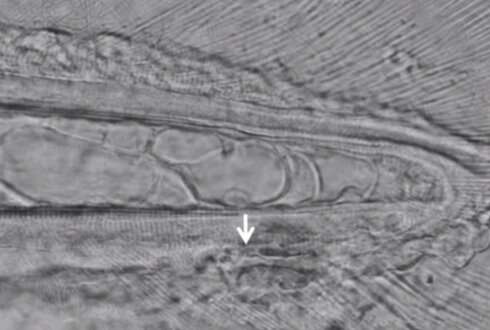Unique footage of trypanosome creates new opportunities to fight sleeping sickness

The parasite trypanosome does not swim through a blood vessel as has always been assumed, it can simply be carried along with the flow. The parasite responsible for tens of thousands of deaths can, however, clings to the wall of a blood vessel. The single-celled organism can also enter the body of a human or animal through this wall. These are the most important results of a study by Wageningen University & Research (WUR) published on eLife.
The trypanosome is a parasite that can live in both animals and humans and is responsible for sleeping sickness in Africa and the Chagas disease in South America. These are both diseases that receive relatively little attention, but both cost the lives of hundreds of thousands of people every year.
Spectacular images
Scientists have always assumed that the trypanosome moves through the bloodstream. But how they do that has never been exactly determined.
Researchers from the Wageningen University & Research studied at how a variant of the parasite (Trypanosoma carassii) moves through the blood vessels of a zebrafish. Not only do these fish have an immune system that is comparable to that of a human, a zebrafish is also transparent. Therefore, the movements of the trypanosomes could be captured by a special camera that captures images at 500 images per second.
"These images are spectacular, because now we can see for the first time what the parasites do in the body of their host," says associate professor Maria Forlenza. It has been shown earlier that the trypanosomes are good swimmers and therefore it has always been assumed that they actively move through the blood vessels. Anyone who sees the speed of the flowing blood in the video can immediately imagine that the organism makes no effort at all to move itself.
Invade the body
In addition, the images also clearly show that the trypanosome can cling to the wall of the blood vessel. This makes it possible to determine where the parasite leaves the bloodstream. Forlenza: "But more importantly, we can now study how it enters the body through the wall of the blood vessel."
If the parasite leaves the bloodstream, it can escape the immune system. Moreover, it can move within the body. If it manages to reach the brain, trypanosome can cause sleeping sickness. Until now it has always been assumed that the organism uses its flagellum (tail) to force a passage. Thanks to the footage from this research it has become clear that it is using the other end of its body. This new knowledge may possibly be used in the future to fight the infections caused by the trypanosome.
More information: Éva Dóró et al. Visualizing trypanosomes in a vertebrate host reveals novel swimming behaviours, adaptations and attachment mechanisms, eLife (2019). DOI: 10.7554/eLife.48388
Journal information: eLife
Provided by Wageningen University





















